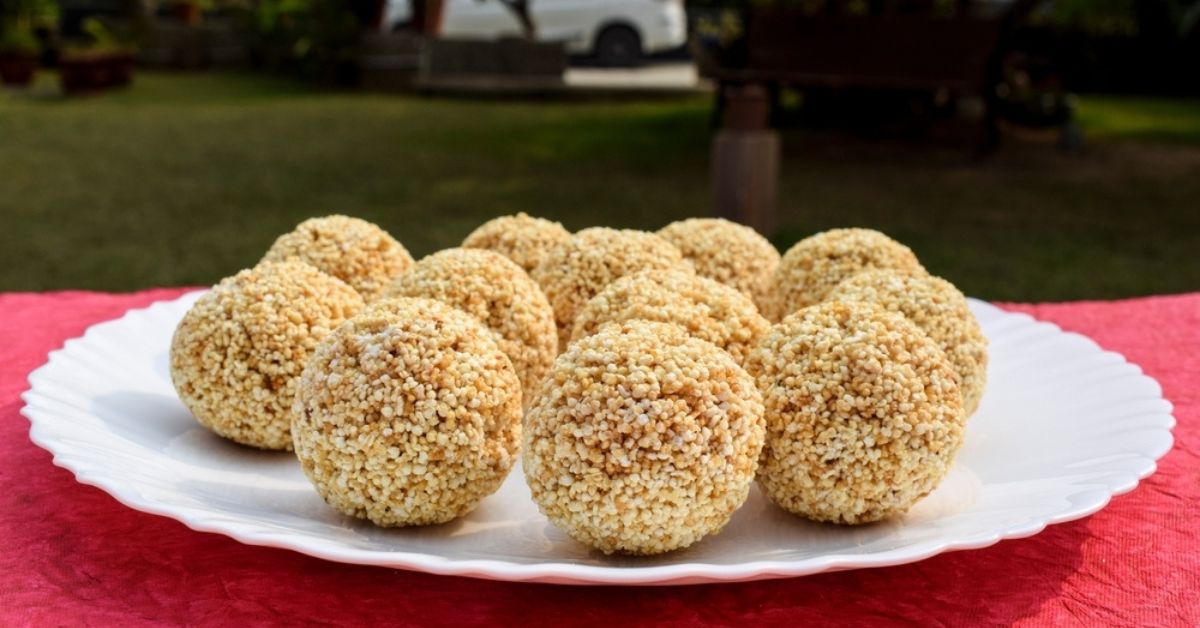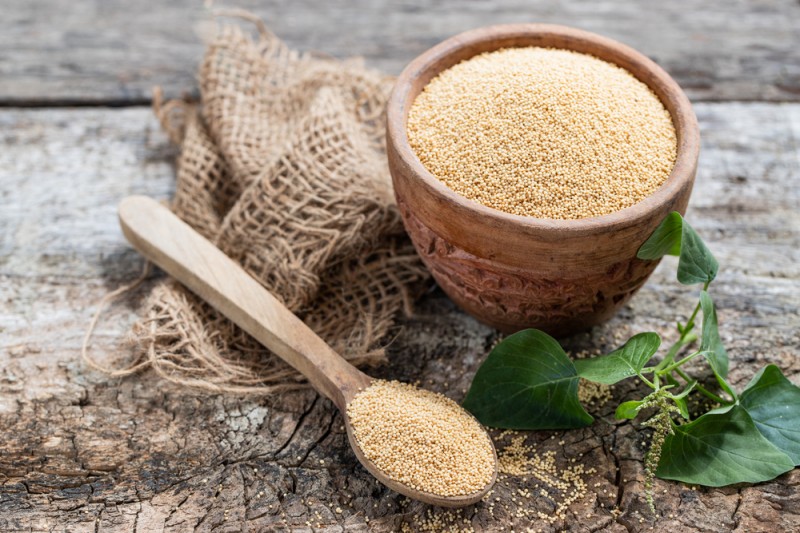Recommended for Astronauts, Superfood Rajgira is The Protein Powerhouse You Need
Weight loss, cholesterol control, immunity and more — amaranth, or rajgira, has many health benefits that make it perfect as a fasting food during Navratri.

As Navratri season arrives, thousands take to fasting to celebrate the festival. But it’s essential that those fasting should consume food that is healthy as well as balanced, with essential nutrients for the body.
Commonly used ingredients like sabudana, kuttu, and samak are used to make a variety of fasting-friendly dishes like rotis, cheela, pooris and so on. One such ingredient is amaranth, also known as chaulai, rajgira or ramdana, which studies suggest has good nutritional value and several health benefits. It is pseudo-grain like quinoa, and a healthy alternative to refined flours.
Chaulai ke ladoo, a North Indian sweet made of rajgira grains in jaggery is a commonly consumed fasting-friendly snack especially during the Navratri festival.
Native to North and Central America, amaranth was once a staple of the Aztecs and is widely consumed by people living in Central America. Today, it is grown in different parts of the world such as India, China, Southeast Asia and Africa.
This ancient grain has a nutty as well as a pleasantly sweet taste, which makes it versatile enough to be used in different types of recipes. It is also rich in fibre and protein, and contains several other essential nutrients such as Vitamin C, manganese, magnesium, phosphorus and iron.
Due to its high nutritional value, rajgira is also considered a superfood. Even NASA recommends it for consumption during space missions, and it included the diets of astronauts.
So let’s take a look at some of the benefits of including this healthy grain in your diet:

1. Aids weight loss
Packed with protein and dietary fibre, amaranth can help you lose weight. Rajgira-based dishes are perfect for those looking for high-protein foods. The protein and fibre content in the grain makes one feel full for longer, thereby suppressing appetite and number of calories consumed.
2. Gluten-free and good for diabetics
Rajgira is gluten-free and hence beneficial for those suffering from celiac disease or gluten sensitivity. It is also a good source of fibre and helps manage blood sugar levels and promote satiety.
3. Boosts immunity
Unlike most grains, amaranth is unique for being a rich source of Vitamin C. This aids in providing an overall boost to the immune system as it promotes white blood cell production, resulting in faster healing or quick repair of cells, as it is a functional element in the production of collagen.
4. Lowers cholesterol
There are certain animal studies that prove the potential of rajgira and its oil in reducing blood cholesterol levels. These state that the phytosterols and oils in amaranth are highly effective in lowering cholesterol levels including triglycerides and LDL. It was also noted that it reduces the bad cholesterol without lowering the good cholesterol.
5. Good for treating anaemia
Rajgira is a rich source of minerals like iron and consuming it increases the production of red blood cells and boosts cellular metabolism, thereby reducing the chances of developing conditions like anaemia. Besides, the Vitamin C content aids maximum absorption of iron into the blood.
Here’s a recipe to make rajgira laddoos:
Ingredients:
- One cup rajgira seeds
- One cup jaggery
- Water
Making:
- Take a pan and heat it on medium flame.
- Add a tablespoon of rajgira seeds at a time and roast till they pop.
- Filter the unpopped seeds and collect the rest in a bowl.
- Take another pan and melt jaggery with water, stirring it till it reaches the consistency of a syrup.
- Add the melted jaggery syrup to the popped amaranth seeds and mix well.
- Apply water to your palms and roll though mix into laddoos.
Edited by Divya Sethu
Sources:
The chemistry behind amaranth grains by Kristian Pastor, Marijana Ačansk; published by MedCrave online on 12 October 2018.
Efficacy of amaranth grain (Amaranthus cruentus) on anaemia and iron deficiency in Kenyan pre-school children, by Catherine W Macharia-Mutie; published by ResearchGate in January 2012.*
State of knowledge on amaranth grain: a comprehensive review, published by National Center for Biotechnology Information in April 2012.
Effect of amaranth consumption on diabetes-related biomarkers in patients with diabetes, published by ResearchGate in April 2017.
Amaranth: Another Ancient Wonder Food, But Who Will Eat It?, by Brian Clark Howard, published byNational Geographic on 13 August 2013.
This story made me
- 97
- 121
- 89
- 167
Tell Us More
We bring stories straight from the heart of India, to inspire millions and create a wave of impact. Our positive movement is growing bigger everyday, and we would love for you to join it.
Please contribute whatever you can, every little penny helps our team in bringing you more stories that support dreams and spread hope.



















